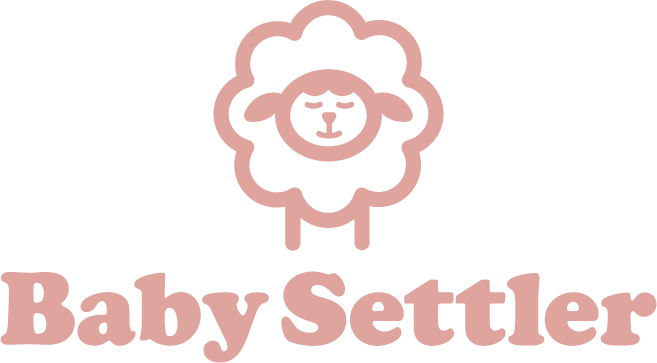
Understanding and Preventing Feeding Aversions in Babies
As a new mom, you’re likely navigating a sea of advice and experiences when it comes to your baby’s feeding habits. One issue that can be particularly concerning but isn’t always talked about enough is feeding aversions. Feeding aversions can be stressful and worrying. Recognizing them, and most importantly, how to prevent them, can help you approach feeding challenges with confidence.
In this podcast, we’ll dive into the signs and causes of feeding aversions in babies. We’ll also talk about how to prevent them. This includes the key principles of the Baby Settler Method, which helps set your baby up for success in both eating and sleeping.
What Are Feeding Aversions?
Feeding aversions refer to when a baby is unwilling to feed, even though they may appear hungry. This is different from oral aversions, which typically involve an unwillingness to have anything in the mouth. With feeding aversions, babies may show signs of hunger, but when offered breast or bottle, they refuse to eat. Or, they might feed for a few minutes and then start showing discomfort, crying, or arching their back.
While feeding aversions can happen for various reasons, they are more common in babies who have had negative feeding experiences early on. These experiences can be caused by forceful feedings, a bottle that’s not the right fit, or feeding at the wrong times.
Signs of a Feeding Aversion
If you’re concerned that your baby might be developing a feeding aversion, it’s crucial to know the signs so you can address the issue early.
Common signs include:
- Baby refuses to eat even though they’re hungry: A baby might show hunger cues (like rooting) but refuse to latch or drink from the bottle.
- Crying or discomfort during feeding: Babies might cry, arch their back, or show signs of tension when they are being fed.
- Feeding for a few minutes, then stopping abruptly: Your baby might begin a feed and then pull away, refusing to continue eating.
- Feeding well when asleep: Some babies with a feeding aversion may still feed well when drowsy or asleep, but refuse to feed during the day.
It’s important to note that occasional rejection of the bottle or breast is not necessarily a sign of a feeding aversion. However, if these behaviors are persistent and happening with regularity, it may be time to seek out a professional’s help.
Common Causes of Feeding Aversions in Babies
Feeding aversions can be caused by various factors, and some may be beyond your control.
Here are some of the most common causes:
- Forceful Feeding: If you’re pressuring your baby to finish a bottle or breastfeed, it can lead to a negative feeding association. Babies who are forced to take more than they need might develop an aversion to feeding because of the stress it causes.
- Incorrect Nipple Flow: If you’re bottle-feeding, using the wrong flow rate can make feeding more difficult. A fast-flow nipple might overwhelm your baby, while a slow-flow nipple might not let them feed effectively. Babies can develop frustration and refuse to feed altogether.
- Negative Experiences with Breastfeeding or Bottle Feeding: A bad experience, such as choking, nipple confusion, or feeding when the baby isn’t truly hungry, can cause a baby to develop a feeding aversion. Babies might also develop an aversion if they experience pain while feeding, such as from reflux or tongue tie.
- Stress and Tension During Feedings: Babies are very sensitive to their caregivers’ emotions. If you’re stressed about feeding, your baby might pick up on that energy and start associating feeding time with stress or discomfort.
- Medical Conditions: Certain conditions, such as acid reflux, tongue tie, and thrush, can make feeding difficult and painful.
How to Prevent Feeding Aversions
While it’s not always possible to avoid a feeding aversion, there are several steps you can take to minimize the risk.
- Practice Paced Bottle Feeding: For bottle-feeding moms, paced bottle feeding mimics breastfeeding by allowing your baby to feed at their own pace. This technique encourages self-regulation and can prevent babies from feeling overwhelmed by a fast-flowing nipple.
- Respect Hunger and Fullness Cues: It’s important to recognize when your baby is hungry and when they’ve had enough. Overfeeding can lead to discomfort and create negative associations with feeding. A full feed does not always mean a large volume of milk; instead, it’s about meeting your baby’s hunger needs.
- Avoid Force Feeding: Never force a bottle or breastfeed if your baby is unwilling. Pushing food on a baby when they’re not ready can cause long-term feeding problems.
- Create a Calm and Positive Feeding Environment: Feeding should be a calming and enjoyable experience for both you and your baby. Minimize distractions, stay relaxed, and make feeding time a positive bonding moment.
- Consider the Right Nipple Flow: Whether you’re breastfeeding or bottle feeding, using the correct nipple flow rate is key. For bottle-feeding moms, consult with your pediatrician or lactation consultant to determine the best flow rate for your baby.
- Work with a Feeding Specialist: If your baby is showing signs of feeding aversions, it can be helpful to work with a professional. A lactation consultant or feeding specialist can help identify the root causes and guide you through potential solutions. The Baby Settler Clinical Team would love to support you! You can schedule a one-on-one consult with our team by going here.
The Baby Settler Method: A Holistic Approach to Feeding and Sleep
At Baby Settler, we understand that feeding and sleep are deeply intertwined. That’s why we’ve developed a holistic approach to feeding that not only supports your baby’s eating habits but also helps set the stage for better sleep.
The Baby Settler Method emphasizes the importance of efficient and effective feeding during the day to help your baby sleep through the night. We work with parents to establish a predictable yet flexible feeding routine, ensuring your baby is well-fed without overfeeding or pressuring them to eat more than they need.
Key principles of the Baby Settler Method include:
Paced Bottle Feeding: This technique ensures that babies are feeding at a pace that feels natural to them, preventing the stress that can come with forceful feeding.
Feed-Wake-Sleep Cycle: We guide you in establishing a routine where feeding is followed by wakefulness and then sleep.
Predictable, Low-Stress Routine: We help parents create a feeding routine that works for their family and ensures their baby is eating enough without being forced. This reduces stress for both the baby and the parents.
To find out more about the Baby Settler Method, go here.
What to Do If You Think Your Baby Has a Feeding Aversion
If you notice signs of a feeding aversion in your baby, it’s important to address the issue early.
Here are some steps you can take:
Observe Feeding Patterns: Pay close attention to your baby’s feeding patterns. Are they consistently refusing feeds? Are they showing signs of discomfort during or after feeding? Keep track of these behaviors so you can discuss them with a professional.
Consult a Feeding Specialist: If you’re concerned about feeding aversions, it’s a good idea to consult with a feeding specialist. A lactation consultant or speech language pathologist can help you identify the root cause of your baby’s feeding issues and offer solutions.
Try a Different Feeding Position: Sometimes, a simple change in position can make all the difference. Experiment with different feeding positions to see if your baby becomes more comfortable during feedings.
Consider Your Baby’s Health: Make sure there are no underlying health issues, such as reflux or allergies, causing feeding problems. Consulting with your pediatrician can help rule out medical causes.
It’s Important to Nurture a Positive Feeding Relationship
Feeding aversions can be overwhelming, but they’re not something you have to face alone. By understanding the causes of feeding aversions, and recognizing the signs early, you can create a positive feeding experience.
Additionally, the Baby Settler Method offers a holistic approach to feeding and sleep that helps parents nurture their baby’s growth and development while setting them up for healthy sleep patterns. If you’re struggling with feeding challenges, don’t hesitate to reach out to a feeding specialist to help you navigate this phase with confidence.
If you’re ready to get started with better feeding and sleep, check out our Nighttime Weaning Guide to help set the stage for peaceful nights.
Must-Have Resources
- For more support and resources, check out The Baby Settler On-Demand Guides delivered through the Baby Settler app.
- The Ultimate Guide to Nighttime Weaning (For Breastfeeders and Bottle Feeders)
- Hillary’s Book: “Babies Made Simple”
- Prenatal and Postpartum Consultations with the Baby Settler Team: Book your session today
- Follow Baby Settler on IG for tips and support

Expert Insights Delivered to Your Inbox
Hey, I’m Hillary. As a labor & delivery nurse, feeding specialist, and a mom of four, I have a lot of friends
It’s funny. I may not hear from someone for actual decades, and then, when they hit about their third trimester, the texts start rolling in.
Honestly, I’m glad to be there for them; few moms have a qualified (and non-judgy!) friend in their corner.
I’d like to be in your corner, too.




